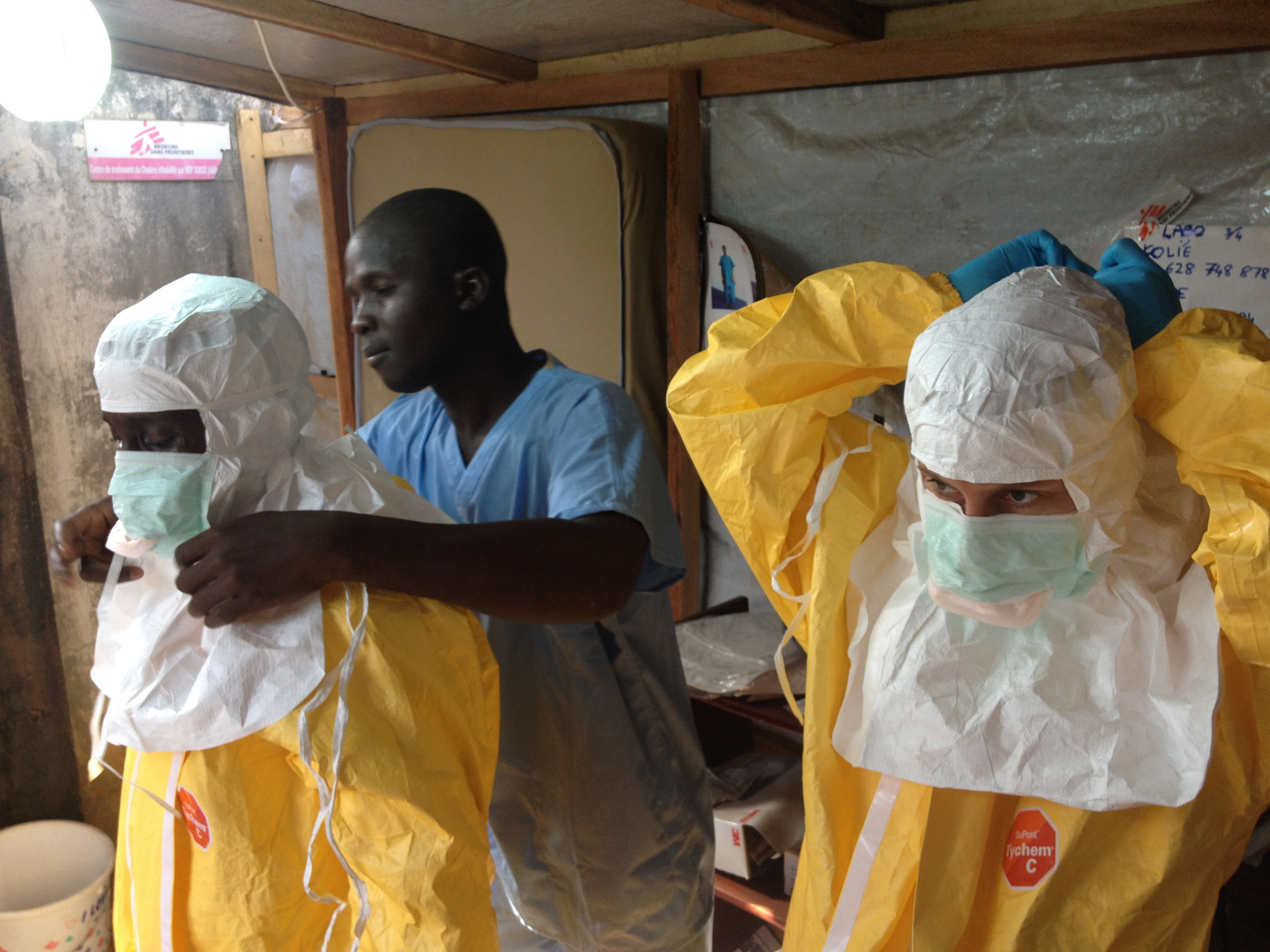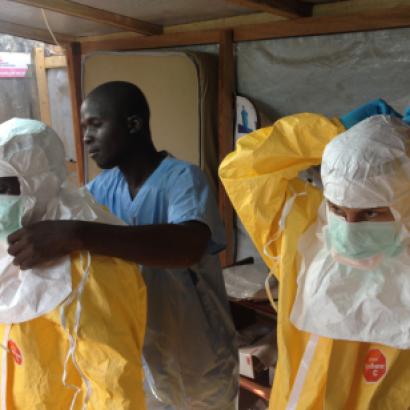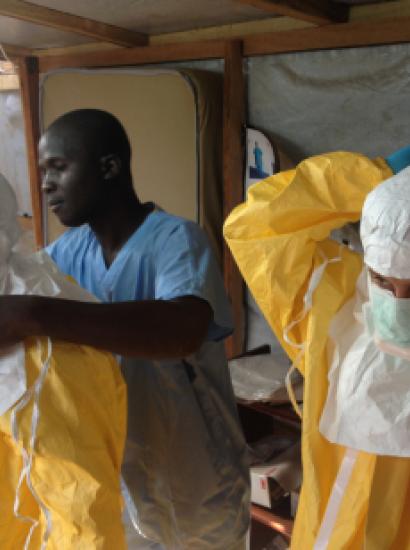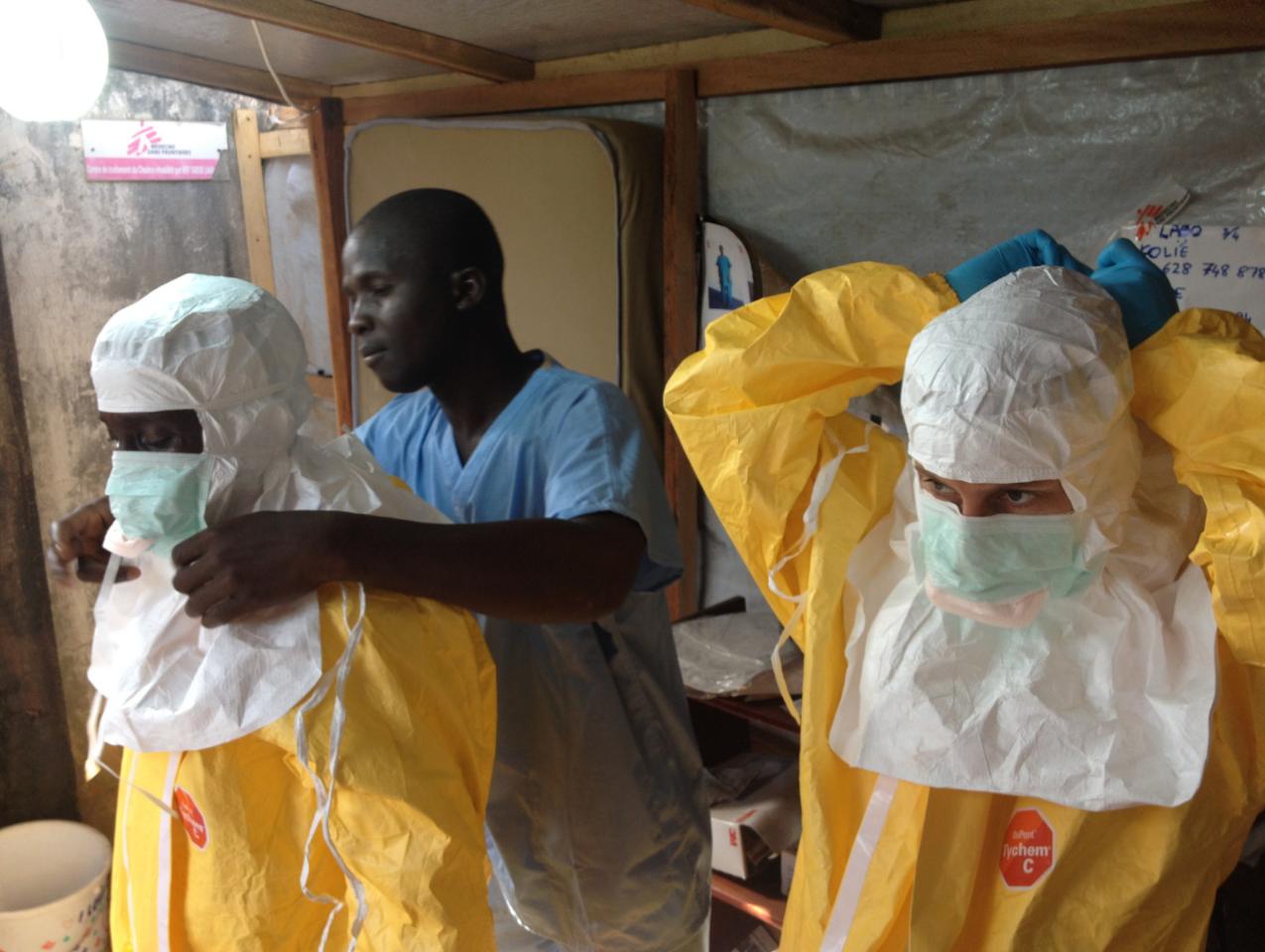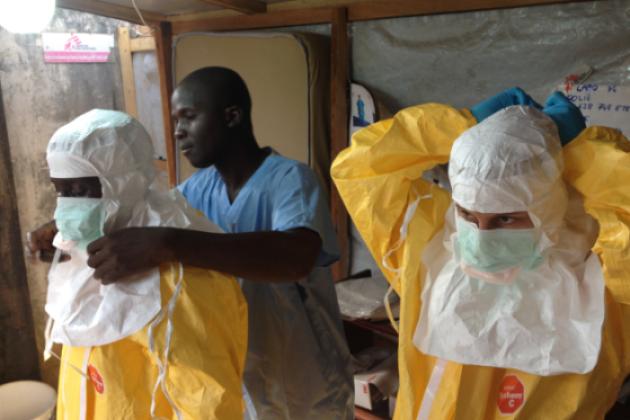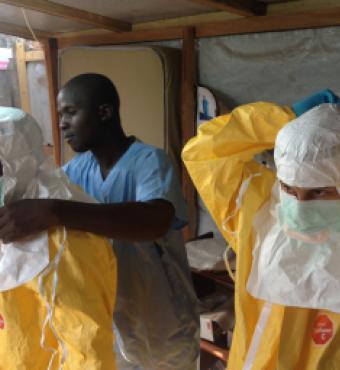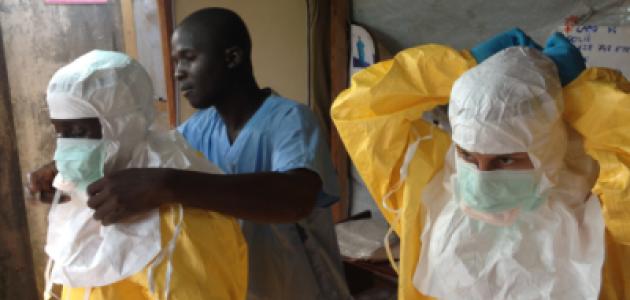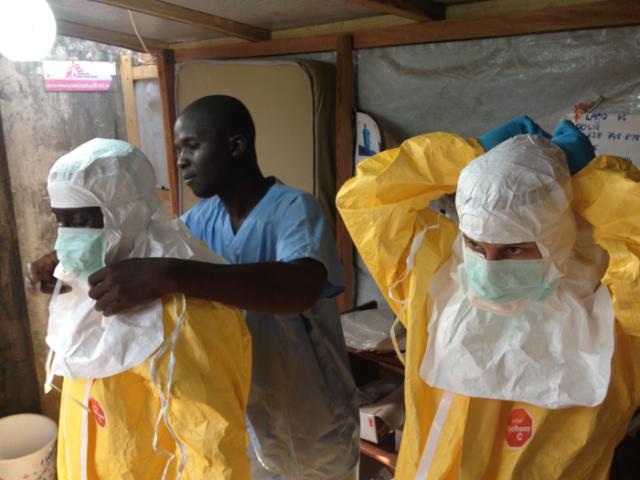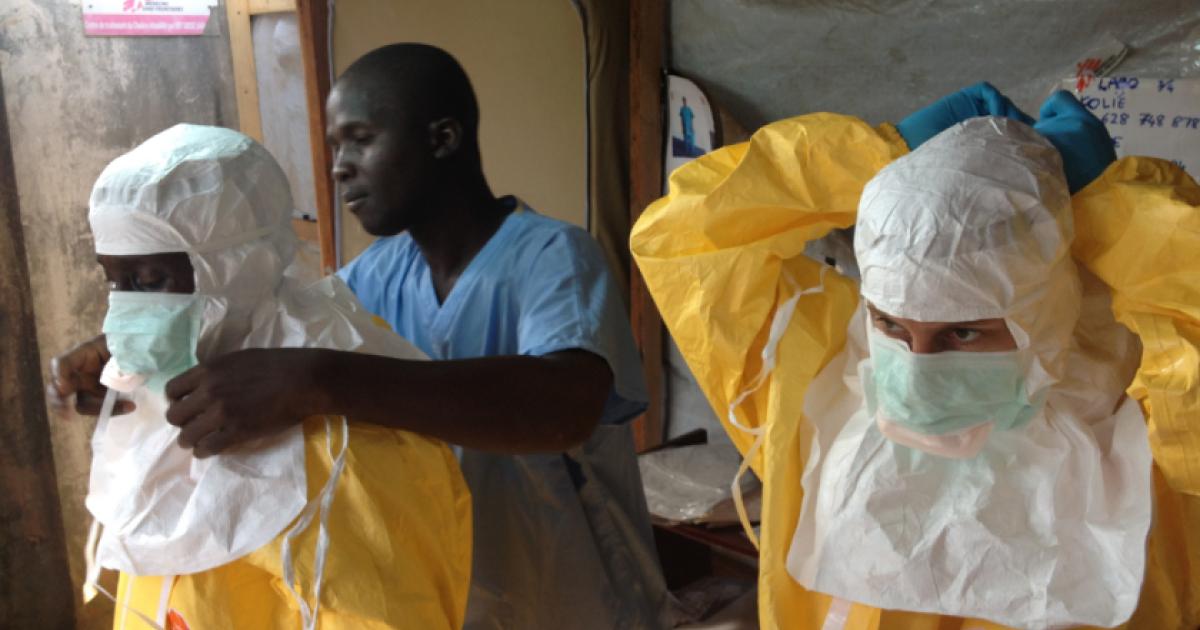- Health Care
Ebola is a terrifying disease. As a viral hemorrhagic fever, it can spread from person to person, as it has been doing with vigor in Guinea, Liberia, Nigeria, and Sierra Leone. From prior Ebola outbreaks, we know that mortality rates can approach 90 percent. The World Health Organization reports that, as of September 9, death has resulted in “only” 2,288 out of the 4,269 Ebola cases in the recent outbreak.
The U.S. Food and Drug Administration regulates all drugs consumed in the United States. Though there might never be an Ebola outbreak in this country, if a drug helps infected Ebola patients at all and does not itself cause an immediate and painful death, the FDA should approve it. Regulatory decisions don’t come much easier. Unfortunately, drugs being developed for Ebola are not making it to market thanks to the FDA. The FDA is too risk averse with new drugs, especially those that help treat deadly conditions, because it follows a flawed “weapons analogy.”
The symptoms of an Ebola infection can include fever, muscle aches, headache, vomiting, diarrhea, cough, rash, and swollen glands. The gums, nose, rectum, and internal organs may bleed, and the patient may also bleed under the skin. Then comes delirium, a coma, and, ultimately, death.
The current Ebola outbreak is coming hard and fast. The WHO reports that nearly half of the Ebola infections infections have occurred in the past 21 days, meaning things are just getting started. The true magnitude of the crisis is murky because so many patients are being “treated,” or at least dying, at home. This is a substantial outbreak for a virus that was undiscovered until 1976 and has been connected with only about 10,000 total cases over the past forty years.
It’s actually surprising that some Western drug companies are developing treatments for Ebola infections. There have been no cases outside of Africa and any successful drug would probably be given away or sold at a huge discount to western African countries, where the outbreaks occur. We in Europe and North America have little to fear, which is one reason most pharmaceutical companies have spent relatively little trying to discover and develop treatments. But, amazingly, not all companies have ignored the Ebola virus. There are a few Ebola medicines in development, including an RNA interference therapy, named TKM-Ebola, from Tekmira Pharmaceuticals in British Columbia.
TKM-Ebola is currently in Phase I clinical testing in healthy adult humans and it was previously tested in non-human primates, where it had stellar success. “The results of these preclinical studies,” according to one expert, “demonstrated that when siRNA—delivered by Tekmira's LNP technology—targeted the Ebola virus to treat previously infected non-human primates, the result was 100 percent protection from an otherwise lethal dose of Zaire Ebola virus.”
When the present Ebola outbreak began to rage, TKM-Ebola was stymied with a clinical hold placed on it by the FDA. Why? The FDA had safety concerns—not concerns with a specific safety problem, mind you, but some vague concern that halted the development of the drug. As the outbreak got worse, the FDA quickly changed its position and modified the full clinical hold placed on TKM-Ebola to a partial clinical hold. In the case of TKM-Ebola, the FDA was effectively saying that there will be no Ebola treatments until those Ebola treatments are proven safe. This is an example of the FDA’s “weapons fallacy.”
The FDA’s Dr. Steven Hirschfeld said in 2002: “We don’t want to put a weapon into the hands of a soldier until it has been tested, and tested under stress.” That sounds reasonable. Sometimes no weapon is better than a defective weapon. But not always. If you were traveling through a dangerous area and you wanted a weapon to protect you and your family against real threats, you would relax your standards and accept less assurance that the weapon was safe because of simple probability: You are far more likely to be killed by outside threats than you are by a defective weapon.
The only people who would ever consider taking an Ebola medicine are those with current infections, and they already face a high mortality rate. Only a medicine with worse odds would dissuade these patients from taking it and it is highly unlikely that any reasonable medicine could be worse than Ebola.
The FDA’s risk aversion is baked into its history. The organization was granted most of its powers after a tragedy that led to the Food, Drug, and Cosmetic Act of 1938. What happened? In 1937, to make a palatable liquid version of its new antibiotic drug sulfanilamide, the Massengill Company carelessly used the solvent diethylene glycol, which we now recognize as antifreeze. Elixir Sulfanilamide killed 107 people, mostly children, before it was quickly recalled. Notably, Massengill was successfully sued and the chemist responsible committed suicide.
The FDA’s raison d'être is to prevent future Elixir Sulfanilamide cases. But there’s a serious problem with this: far more people die from the diseases themselves than from the drugs designed to address those diseases. Every unnecessary death is a tragedy, of course, but Elixir Sulfanilamide killed 107 people; Ebola has itself, since its discovery in 1976, killed thousands. And Ebola, while scary, is just one example of a deadly disease whose treatment is being impaired by the FDA.
One single disease, lung cancer, kills more Americans each year than the combined U.S. casualties from battle in the Revolutionary War, the War of 1812, the Mexican War, the Spanish-American War, World War I, the Korean War, the Vietnam War, and the Persian Gulf War. There is also heart disease, stroke, infectious diseases, pneumonia, diabetes, Alzheimer’s, and influenza, among others. The biggest killer is heart disease, which kills more Americans each year than the combined U.S. combat casualties in all American wars. In total, these diseases kill about 2.3 million Americans a year. The total number of pharmaceutical adverse-event-caused deaths in the United States might be as high as 100,000 per year.
Doing the math, people are 23 times as likely to be killed by a disease as they are to be killed by a medicine to treat that disease. Ninety-six percent of Americans are going to die from noxious things that come from outside the pharmacy.
The FDA requires pharmaceutical companies to provide a balanced view of their drugs, which is why drug ads assault you with an endless list of bad side-effects. A truly balanced view would inform viewers and readers of the risks of the diseases and afflictions themselves. The side-effects of drugs are usually insignificant compared to the morbidity and mortality of common afflictions, even without an Ebola scare to wake us up from time to time.
What is happening with TKM-Ebola? Dr. Richard Sacra, a Massachusetts physician who was infected with Ebola while working Liberia, was transferred to Nebraska Medical Center for treatment and given an experimental drug along with blood transfusions. The identity of the experimental drug wasn’t released immediately, but later the hospital admitted that it was the still-unapproved TKM-Ebola. And Dr. Sacra? His progress has been “remarkable.”
If I had Ebola, TKM-Ebola would be a good enough weapon for me. And I suspect it’s a good enough weapon for most Africans, like Milton Mulbon. According to The Wall Street Journal, Mr. Mulbon “arrived in a taxi at the gates of an Ebola clinic in Liberia's capital, Monrovia, with his 24-year-old daughter, Patience, bleeding in the back seat. Guards turned them away. ‘They're telling me no space?’ he protested, the taxi parked nearby. ‘She's lying down in there almost at the point of death!’” His daughter died within hours.
The FDA’s weapons analogy would be reasonable if we lived in complete safety and used weapons purely by choice. Nothing could be farther from the truth. The bombs and explosions may be silent and invisible, but we, like Patience Mulbon, are living in a dangerous warzone of diseases. The only choice we have is whether we fend off the deadly diseases using admittedly imperfect weapons or whether we succumb to them using no weapons at all. To send soldiers into an active battlefield without weapons is insane. The FDA does this daily and, because of this, the FDA probably harms more people than it protects.







